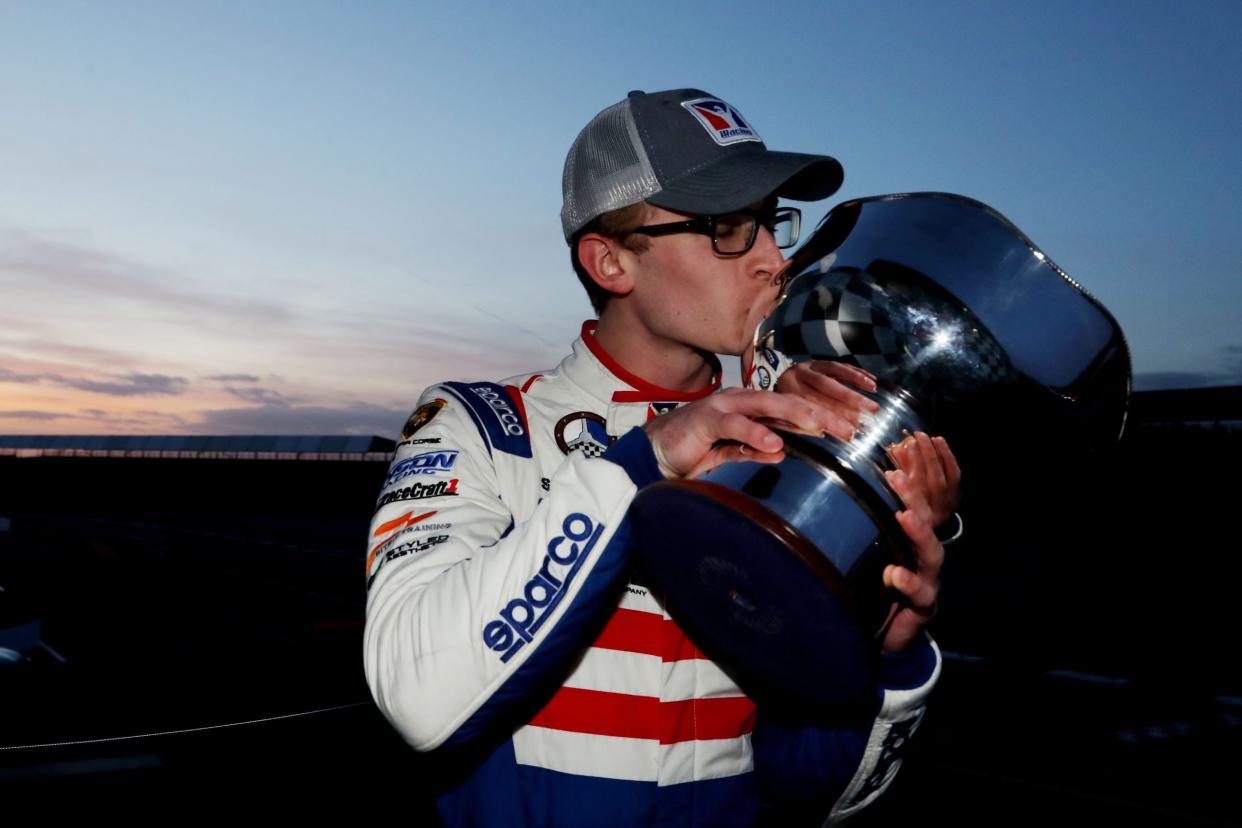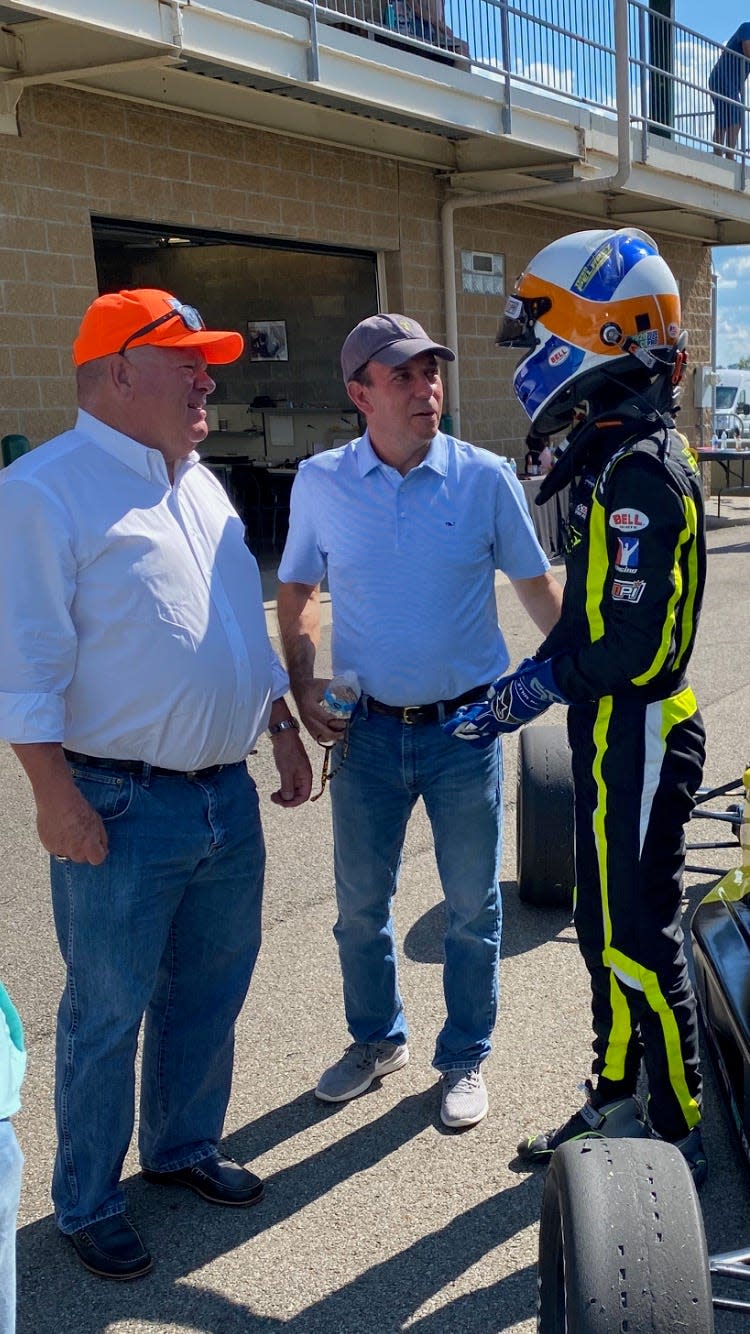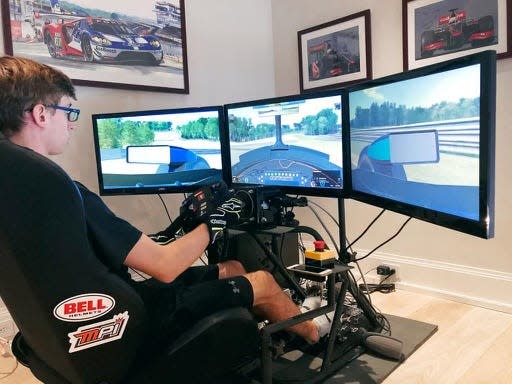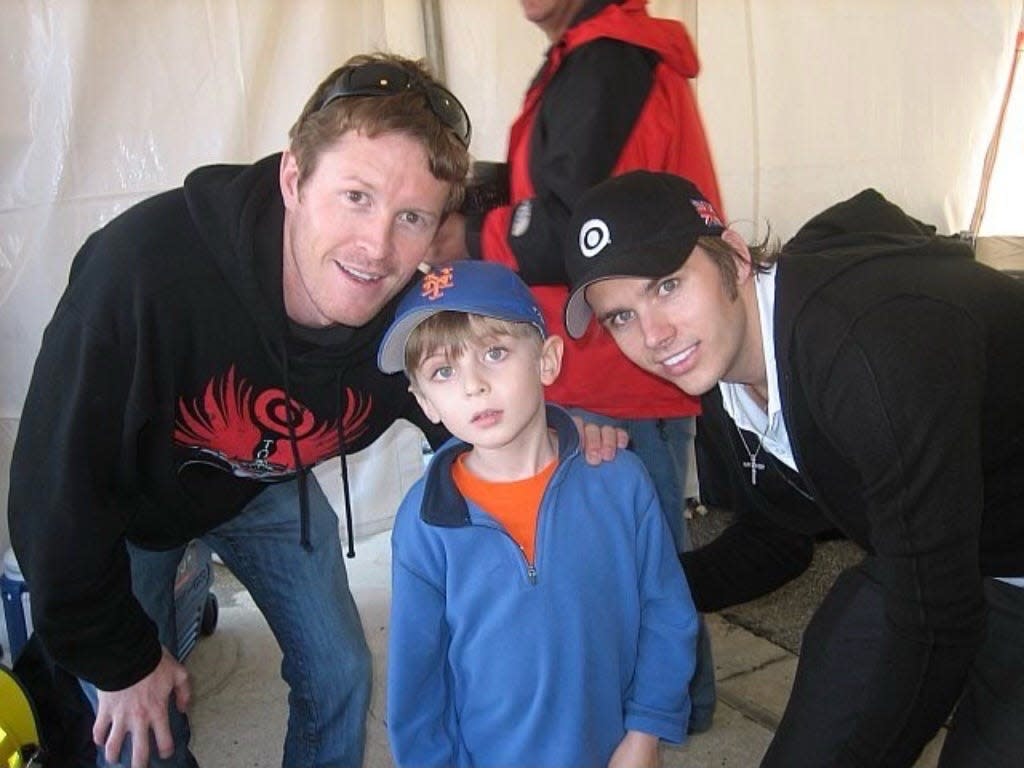Racing no longer a video game as 21-year-old Palm Beach driver inches toward Formula 1
Early in the film “Gran Turismo,” a father bursts into his teenage son’s room, exasperated.
“You think you can play a stupid game about cars and become a race car driver?” he asks.
Luckily, the father wasn’t talking to Palm Beach’s Max Esterson.
If he had been, a young Max could have shot back:
Now that you ask, I do.
Not to mention that today, at age 21, Esterson could have a better response:
I already am.
This weekend’s Formula 1 Miami Grand Prix is a metaphor for Esterson and his family. Just as the race is two counties away, Max is two steps away from that highest level of motorsports. Four years ago, he moved to the UK, by himself, to compete in Formula 3. He knows graduating to F1 is both the ultimate goal and against the odds, but then again, he started on a $300 not-so-stupid computer game when even F3 wasn’t a dream. Now he’s the only American in the circuit.

“I call it the organic ‘Grand Turismo' story,” says Max’s father, Robin, a former race car engineer and designer who was part of Emerson Fittipaldi’s winning Indy 500 team in 1989.
“Gran Turismo” is a 2023 film based on the true story of Jann Mardenborough, a British video game whiz who gets a crack at the real thing and makes the most of it.
“It’s not so crazy to think of for me,” Max says.
Max Esterson vs. Max Verstappen? It's on

Crazy would be thinking that Max could log on to his simulator and hold his own against world champion Max Verstappen (he actually has), get tips from six-time IndyCar champion Scott Dixon (done that, too), and then, during the pandemic when the only racing was virtual, end up giving tips to veterans such as Dixon so they could compete in iRacing.
“A lot of them needed help,” he says.
Max says this without a trace of braggadocio. The surreal nature of where he came from and where he is today is not lost on him.
“Especially to be, like, coaching or telling Scott Dixon how to do things was pretty strange at first,” he says.
The strange curves in Max’s rise rival any that a course designer can conjure. Many drivers come up through the ranks racing karts. The only time a young Max sat in a kart that didn’t involve his computer?
“The occasional indoor sort of birthday-party style.”
The fact that he reached F3, and won the Formula Ford Festival en route, is a testament to his skill from hours behind a Logitech steering wheel clamped to his desk and later his simulator (quick lesson: racers always refer to it as their “sim” and make a distinction between computer games and more serious sims such as iRacing, which is where real-life F1 drivers compete).
Sim racing is remarkably true to life

Nobody whose background is so heavily in the virtual world could conceive of getting where Max and Mardenborough did if it weren’t for the remarkably true-to-life test virtual racing now provides.
“I think a lot of people probably underestimated how good the games or sims are now,” Max says. “Like, they’re so close. Visually, at least, the tracks are identical because they’re all scanned with sophisticated equipment.”
If real drivers zipping around Hard Rock Stadium experience a bump, virtual racers do, too. Crash in real life and you can injure your hands. Crash in the virtual world and you won’t break bones, but your hands will sting. Even the graffiti is matched. Put it together with multiple screens for a wide-angle view, plus many of the discomforts drivers endure during a race. Finally, toss in that most adjustments Robin might have once made in real cars, Max makes when he builds his virtual car. He can adjust tire pressure, wing angle and ride height, to name only a few.
Suddenly, it begins to make sense that while many racers aren’t cut out to transition into real cars, some, such as Max, are.
“I’ve been around sim racing for a bit and I've seen a lot of drivers and they're talented and they're good,” Aston Martin driver Jak Crawford says. “You know, even I sim race a lot and I can't beat some of those guys, they're so good. And yeah, I think it's just about opportunity for those guys. And you know, if they can get a chance in a real car to show what they can do, I think they'd do well.”
Might Max’s path behind a wheel become the norm for future generations of racers?
“I think Max is an aspirational example,” Robin says.
Max Esterson originally 'didn't think it was possible' to become a driver

This wasn’t handed to him. Because of Robin's background, a typical Sunday morning would find the family gathered around the TV to watch live races, never thinking it was a learning experience for one of them.
"I didn't think it was possible or wasn't my intention when I started doing it," Max says. "Of course, I thought maybe after I made some money late in life, I would drive or something for fun, but I never really thought it would happen."
Robin says when Max showed an interest in actual racing, he and wife Pam made it clear the family was not going to invest in “the latest, greatest engine” unless Max took it seriously and succeeded. Starting in 2020, Max qualified second and finished sixth in the Formula Ford Festival, then finished second a year later, then won it in 2022.
Robin recalls telling Max, “Send your mom a picture of you with these three trophies you won at the Formula Ford Festival.”
And?
“That was enough to get Mom’s pride kicking in a bit and on board with the idea of, like, ‘Maybe there’s something here,’ ” Robin says.
Max scrapped plans to study engineering at Georgia Tech and instead packed for the UK. He didn’t even have his high school diploma — that was something he’d earn by wrapping up classes virtually.
“He might have done his laundry once in a row but I don’t think he ever did it twice in a row,” Robin says. “He grew up 10 years the first year he left.”
Teaching the pros how it's done virtually
Robin’s experience working with Fittipaldi helped open doors for Max many kids never pass through. One of the family treasures is a photo of Max, about 5, with Dixon and fellow driver Dan Wheldon. Nobody could have imagined when the photo was shot that the kid someday would be helping Dixon navigate a course.
It happened in 2020 when the sports world shut down for the pandemic. A network decided to air virtual racing, about the only live sport available. The problem: Many veteran drivers didn’t grow up with a joystick. Robin recalls one virtual meeting of about a dozen, including Dixon and the Chip Ganassi team. They were running through the Circuit of the Americas in Austin, Texas, when Max zipped through one section of the track and the drivers and engineers had him explain his strategy.
“It was sort of an interesting learning experience for all of them,” Robin says.
Dixon once told The Wall Street Journal, “I have helped Max a little in the past as he began racing real cars. When things turned on their head, he helped me get up to speed in iRacing — the hardware and driving technique, et cetera, to be faster.”
In place of his original $300 setup, Max uses a more advanced sim costing about $6,000, which still pales in comparison to the elaborate setups used by F1 drivers. A source in the business confirmed that some drivers invest more than a million dollars on their sims. It’s a staggering figure until you consider that because of worldwide travel and limitations on access to circuits, F1 drivers spend much more time on each track virtually than they ever could in real life. It’s their training ground. And their release.
Max recalls being able to hold his own against Verstappen when Verstappen joined the iRacing world.
“He’s good now,” Max says. “He’s been online at 4 a.m. before his F1 race later that afternoon. Not training. Just having fun.”
F1 is coming back to Miami! How many laps is it? What to know about 2024 Miami Grand Prix
Drivers such as Verstappen and Lewis Hamilton pull in millions. On the other hand …
“I can’t tell you how many people ask you, ‘Gee, how much money does Max make now?’ ” Robin says. “It’s negative and an astonishing amount of money.”
Max adds, “It’s not exactly a wise financial decision to sponsor someone in Formula 3.”
You either have to love racing or love the driver. The Esterson family does both.
And no, they don’t think racing — in real life or virtually — is stupid at all.
Dolphins reporter Hal Habib can be reached at hhabib@pbpost.com.Follow him on social media @gunnerhal.
Click here to subscribe.
Miami Grand Prix
Where: Miami International Autodrome around Hard Rock Stadium
When: Events all weekend; race starts at 3:55 Sunday.
Tickets available via race website, https://f1miamigp.com/tickets/
Schedule: Saturday — includes F1 sprint race, F1 qualifying, F1 academy and Porsche Carrera Cup North America races (3:55 p.m., ESPN). Sunday — Includes F1 academy and Porsche Carrera Cup North America races, Formula 1 Miami Grand Prix (3:55 p.m., ABC).
For information: Visit https://f1miamigp.com, call 305-943-RACE (7223) or 305-843-8000 or email guestexperience@hardrockstadium.com.
This article originally appeared on Palm Beach Post: Max Esterson eyes F1 Miami Grand Prix after starting in sim racing
